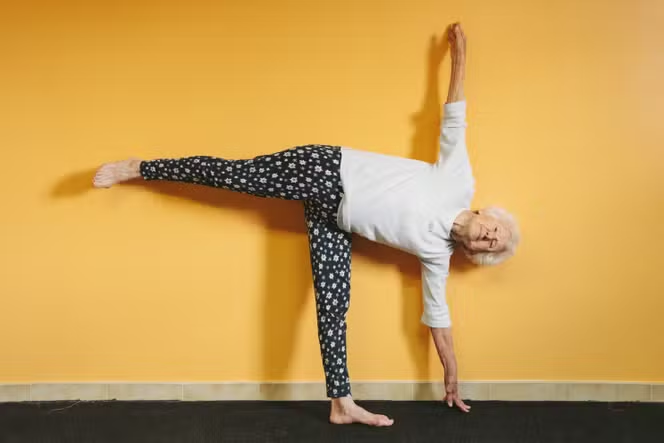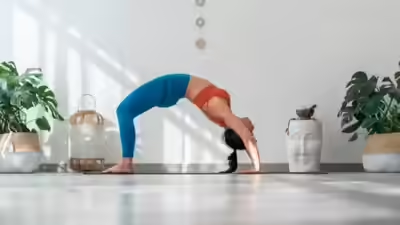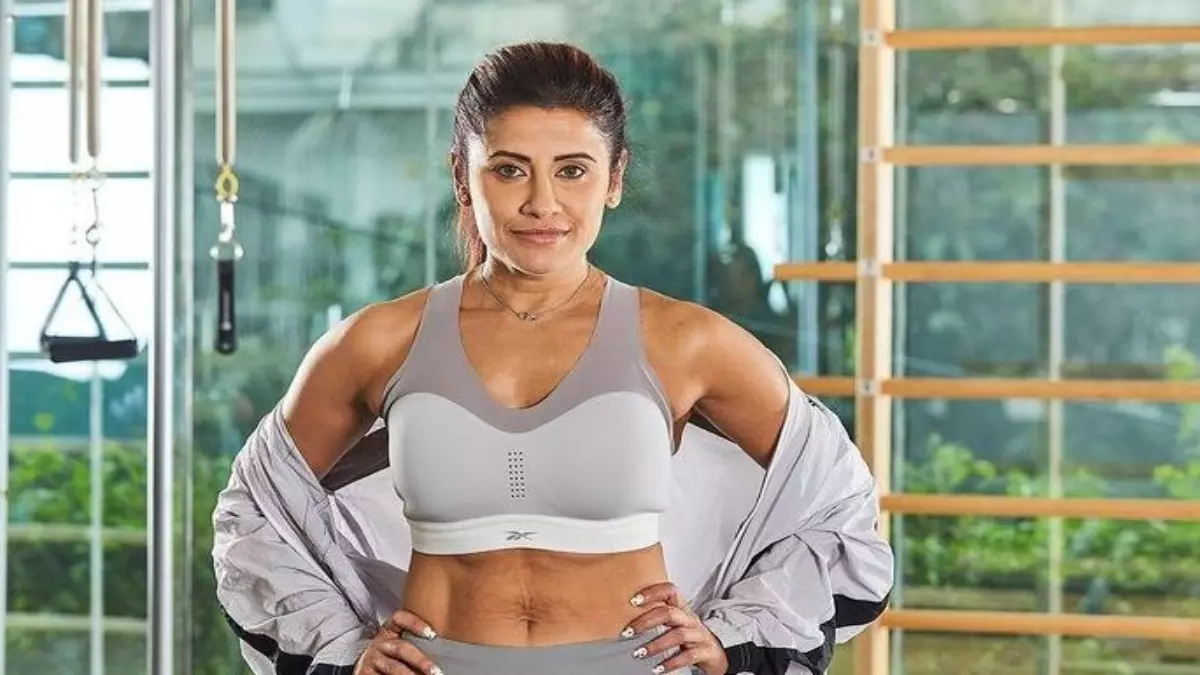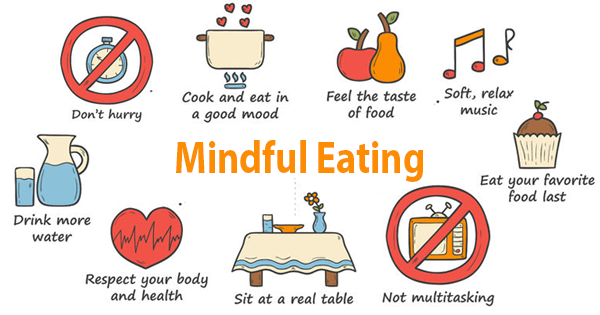Pilates vs Yoga: When it comes to workouts promising a trimmer waistline and improved fitness, two practices consistently dominate the conversation: Pilates and yoga. Both are often grouped under the “mind-body” fitness umbrella, yet they differ greatly in execution and benefits. While yoga is rooted in ancient traditions that balance the mind and body, Pilates is a modern system designed with laser-like focus on core strength.
Now, experts, trainers, and enthusiasts are locked in a fascinating debate: which practice is more effective at reshaping your waistline? The answer isn’t as straightforward as many think. Yoga works quietly by lowering stress hormones and preventing belly fat, while Pilates chisels the core through precision movements. Together, they present two very different paths toward the same goal.
Yoga: The Stress-Busting Fat Fighter
At first glance, yoga may seem too gentle to drive significant fat loss. After all, compared to high-intensity workouts like running, it burns fewer calories. For example, a 50-minute Vinyasa yoga session burns up to 180 calories—about the same as a brisk walk.
But researchers argue that yoga’s benefits extend far beyond calorie counts. In fact, yoga might fight fat more effectively through an entirely different mechanism: stress reduction.
The Role of Cortisol
Cortisol, often called the “stress fat” hormone, plays a major role in weight gain, especially around the belly. High cortisol levels encourage fat storage in the midsection and can also increase appetite, leading to cravings and midnight snacking.
Studies show that yoga lowers cortisol levels, directly helping to reduce abdominal fat accumulation. By calming the nervous system and promoting mindfulness, yoga reduces both the physical and emotional triggers of overeating.
Imagine finishing a yoga class and lying in savasana (corpse pose). While the pose appears motionless and restful, science suggests that this deep state of relaxation may be more effective at curbing fat storage than hours of high-stress exercise.
Metabolic Benefits Beyond the Mat
Yoga’s impact isn’t confined to the session itself. Experts say the afterburn effect—the body’s continued calorie expenditure post-exercise—can last longer due to yoga’s muscular endurance demands. By building stamina, flexibility, and functional strength, yoga keeps the metabolism slightly elevated even after practice ends.
Combined with its hormonal balance effects, yoga emerges as a holistic tool for waistline management. It may not provide instant calorie deficits, but it creates conditions for long-term, sustainable fat control.
Pilates: Precision That Targets the Core
If yoga wins through calmness, Pilates wins through control and precision. Developed in the early 20th century by Joseph Pilates, the method was designed to improve strength, flexibility, and overall body alignment. Today, it is best known for its ability to sculpt the core.
Unlike yoga’s flowing sequences, Pilates emphasizes slow, deliberate, and exact movements. Each exercise is carefully designed to maximize the impact of even the smallest motions. Trainers often describe it as transforming micro-movements into calorie-burning power.
The Hidden Abdominal Advantage
What sets Pilates apart is its ability to activate deep abdominal muscles that most exercises overlook. While crunches or yoga poses often engage surface-level abs, Pilates drills into hidden layers like the transverse abdominis and pelvic floor muscles.
By targeting these deeper muscles, Pilates creates a tighter, more toned waistline. According to trainers, this unique activation leads to faster visible changes than yoga can provide alone.
Focus and Form
Pilates demands full concentration. Every rep requires careful attention to form, alignment, and breath control. Unlike yoga, which flows between poses, Pilates ensures that each movement is deliberate and purposeful. This laser focus not only enhances results but also prevents wasted effort, maximizing calorie burn and muscle engagement.
The outcome? A leaner, stronger, and more sculpted core that supports both aesthetics and everyday functionality.
Calmness vs. Control: A Side-by-Side Look
Both yoga and Pilates offer unique advantages for waistline management, but their methods differ significantly:
| Aspect | Yoga | Pilates |
|---|---|---|
| Calorie Burn | ~180 calories in 50 minutes of Vinyasa | Varies, but higher due to focused reps |
| Key Benefit | Reduces cortisol, prevents fat storage | Activates deep abdominal muscles |
| Approach | Flowing, meditative, stress-relieving | Controlled, precise, rep-based |
| Waistline Impact | Prevents belly fat through stress control | Reshapes and tones core faster |
| Additional Benefits | Flexibility, balance, mindfulness, better sleep | Posture correction, strength, lean muscle tone |
Yoga works from the inside out, calming the mind and rebalancing hormones. Pilates works from the outside in, chiseling hidden muscles for visible changes.

The Smart Choice: Why Not Both?
For those seeking a leaner waistline, the smartest approach may not be choosing between yoga and Pilates, but combining the two.
- Yoga provides stress management, hormone regulation, and overall balance, ensuring that fat storage is kept under control.
- Pilates delivers precision core strengthening and toning, creating physical definition and posture improvements.
Together, they complement one another perfectly. A week could include two Pilates sessions for muscle activation and two yoga classes for recovery, stress relief, and endurance.
This combined routine balances the physical and mental aspects of fitness, paving the way for results that are both visible and sustainable.
Read about: What to Expect from Prenatal Yoga: A Comprehensive Guide for Expecting Moms
Conclusion
The debate over Pilates vs yoga isn’t about declaring one winner. Instead, it’s about understanding that each offers something valuable in the quest for a smaller waistline.
- Yoga may not burn as many calories as running, but its stress-reducing powers lower cortisol, prevent belly fat, and curb unhealthy cravings.
- Pilates may not offer the meditative calm of yoga, but its laser-focused movements activate deep abdominal muscles, sculpting the waistline faster.
Ultimately, the secret to a toned midsection may not be found in choosing one discipline over the other but in blending their strengths. By combining yoga’s calmness with Pilates’ precision, you create a powerful formula for both physical transformation and long-term wellness.
Also read: TVS Ronin Prices Reduced: Now Starting from Rs. 1,24,790
FAQs
1. Does yoga really burn belly fat?
Yoga doesn’t directly “burn” belly fat in the way cardio does. Instead, it reduces stress and lowers cortisol, a hormone linked to fat storage in the midsection. Over time, this helps prevent weight gain and promotes healthier eating habits.
2. Is Pilates better than yoga for weight loss?
Pilates tends to show faster visible results in waistline toning because it targets deep abdominal muscles. However, yoga helps with long-term fat management by regulating hormones and stress. The best results come from combining both.
3. How many calories can I burn in a yoga class?
A 50-minute Vinyasa yoga session burns up to 180 calories, roughly the same as a brisk walk. Other yoga styles, like Hatha or restorative yoga, typically burn fewer calories.
4. Can Pilates alone flatten my stomach?
Pilates strengthens and tones the core, which can flatten the stomach and improve posture. However, for fat reduction, it should be paired with a healthy diet and, ideally, stress management techniques like yoga.
5. Which is better for beginners—yoga or Pilates?
Yoga may be more approachable for beginners seeking flexibility and stress relief. Pilates, while slightly more technical, can also be started at any fitness level with proper guidance. Many find alternating between the two offers the best balance.
6. How often should I practice yoga or Pilates for results?
Experts recommend 2–3 sessions per week of either yoga or Pilates. A mix of both, practiced 4–5 times weekly, offers the most comprehensive benefits for waistline management and overall fitness.

I am the founder and writer of Healthwali.com. Here I personally publish every update, Fitness and Yoga guide , read more for you – that too in easy language.







